When you are trying to start a PC but instead of booting, it shows the following error ‘Operating System Not Found’ or ‘Missing Operating system’ on a black screen? Well, then don’t worry, in this blog we are going to show that how you can overcome this error. The error message may vary for the different users based on the BIOS used by the system.
Why Does this Error Occur?
There are several known and unknown reasons for facing this error, some of them are listed here.
- The hard disk failure, either physical or logical
- If there is a fault in cables
- The BIOS (an input/output system) is unable to detect the hard disk
- Windows Master Boot Record disk is corrupted
- Due to an inactive partition, which contains an MBR
- If the BCD is damaged
- If there is a fault in BIOS settings
- Either a wrong partition is active, or the partition which saves Windows boot files is no longer active
How to solve this Windows Problem?
If you have got the same error and worrying about the data you have on your system, then we have come up with some manual and an automated method. Both of these methods will help you to understand and solve your query.
Method 1: Check if the system’s BIOS detects hard disk
Like we have discussed earlier also that one of the causes of this error is that your system’s BIOS does not recognize your hard disk. So, you first need to check if it is the main issue, for that you need to verify the BIOS settings.
For this, you need to press the F10 or F12 key while the system is starting. Release the keys once the system is started and you see the BIOS setup utility. Once you get the utility on screen, try to find IDE Primary Master, IDE Primary Slave, IDE Secondary Master and check the status in front of them, whether system disk information is displayed, or the status is ‘Not detected’ or None.
If the status is ‘Not detected or None,’ then you need to Select None to Auto, by doing this your OS not found error will be resolved. If your hard drive is detected by BIOS, then exit BIOS.
Second, you need to make sure that the drive on which you have installed the Windows is selected as the preferred boot drive.
Method 2: UEFI Secure Boot Settings
UEFI is Unified Extensible Firmware Interface, a replacement for BIOS, and almost every system has it enabled. Even if it is enabled in your system, it might not work. The Windows can only boot in UEFI mode if it is installed on a GUID Partition Table, not on MBR disk.
So, for this, you can try either enabling or disabling UEFI Secure Boot whichever may work for you. Search for the security tab, that is where you can find the option Secure Boot, there you can make some desired adjustments.
Method 3: Try Resetting the BIOS
There can be a lot of reasons behind why your Operating System can’t be found. One of the solutions to fix it without knowing the particular reason is try resetting your BIOS. You need to make all the BIOS menu to its default values, doing this may help you to solve the error.
For this, you need to do the same procedure to open the BIOS utility as described in method 1. While starting your system keep F10/F12 pressed and release once you get the utility display. Once it is opened, look for Setup Defaults or Reset BIOS key at the bottom. On different systems it is denoted by a different key, check what is it in your system. The system will ask you to reconfirm your choice, confirm it and restart your system.
Method 4: Try Repairing MBR disk With Windows Installation Disk
Master Boot-Repair can face corruption and get damaged due to reasons like mistaken operation and virus attack. To repair MBR, you can apply the Windows Installation Disk method.
Start the system by inserting the Windows Operating System disk; press Enter when it prompt boot for CD. Next, you need to start the Recovery Console, for that you can press ‘R’ key. After that at the C:\>, type FIXMBR and press Enter. Now, press ‘Y’ key and when you are asked to write a new MBR and press Enter. Once the procedure is over, restart the system.
Method 5: Activate the Correct Windows Partition
As we have already discussed that one of the reasons of Operating System error is either the partition is inactive, or a wrong partition is set on active mode. So, to make the correct partition active, you can use Window’s native diskpart tool.
To perform this method, you must have a Windows Installation Disk. So, start your system with the disk and when the Troubleshoot screen appears set your preferred language, keyboard, time format and click on Next. Now, select Repair your computer, click on Troubleshoot, select Advanced Options and then select Command Prompt.
Start with typing diskpart in command prompt and press Enter. Type list disk and press Enter. After this, a list of all attached disks in your system, write down the number of the disk you need to work on. Now, type select disk (Number), replacing (the number you just noted down) and press Enter.
Type list volume and hit Enter key. Now, the partitions you have selected on the disk will display on the screen. Figure out which partition is the one on which the windows is installed and write down the number.
Now, type select volume (number), replacing (the number you just noted down), type activate, and press Enter. Finally, try restarting your system.
Method 6: Try Fixing the Boot Records
There are three records found in your system on which your system depends, and they are Master Boot Record, DOS Boot Record, and the Boot Configuration Database. These records are very important and if they get damaged or corrupted there are very likely chances that you get the Operating System error.
Even for this method you need a Windows Installation drive and follow the whole process we followed in method 5. Enter preferred language, keyboards, and time format and click on Next. Now, on the next screen, select Repair your computer and go to Troubleshoot, select Advanced Option, and then Command Prompt. After the loading process, type boot.exe/fixmbr press Enter. Now type boot.exe/fixboot and press Enter, now finally type boot.exe/rebuildbcd and again hit Enter. This may take time. Once it Is done, restart your system.
Method 7: Check Hard drive
- Another reason for OS error is that either hard drive is damaged or corrupted. So, you need to check for this possibility too. For this, you need to press F10/F12 while starting the system, release the keys once the BIOS utility is opened in the system.Now, select Tools menu by using the right arrow, and select Hard Drive Self Test and press Enter. In the end, you will get the results, if all tests are cleared that means there is no problem with your hard drive. If not, then you need to contact your hard disk manufacturer.
- If this doesn’t work or did not give results, then you can try an automated version for this. Windows Data Recovery is an exceptional tool which allows you to fix the hard drive in the easiest way and recover the data from it. Let’s see how it works.
- Start and run the software and click on File Trace.
- Select the drive from the left panel and click Next.
- The software will show you the system information, click on Next to continue.
- Now select the files which you want to recover. Check the particular folders and click on Ok.
- On the next window, you can select the folders and preview them. Select the desired folder and click on Recover.
- Provide a destination to your file and click on Ok.
- Once the process is done, finally, click on Ok.
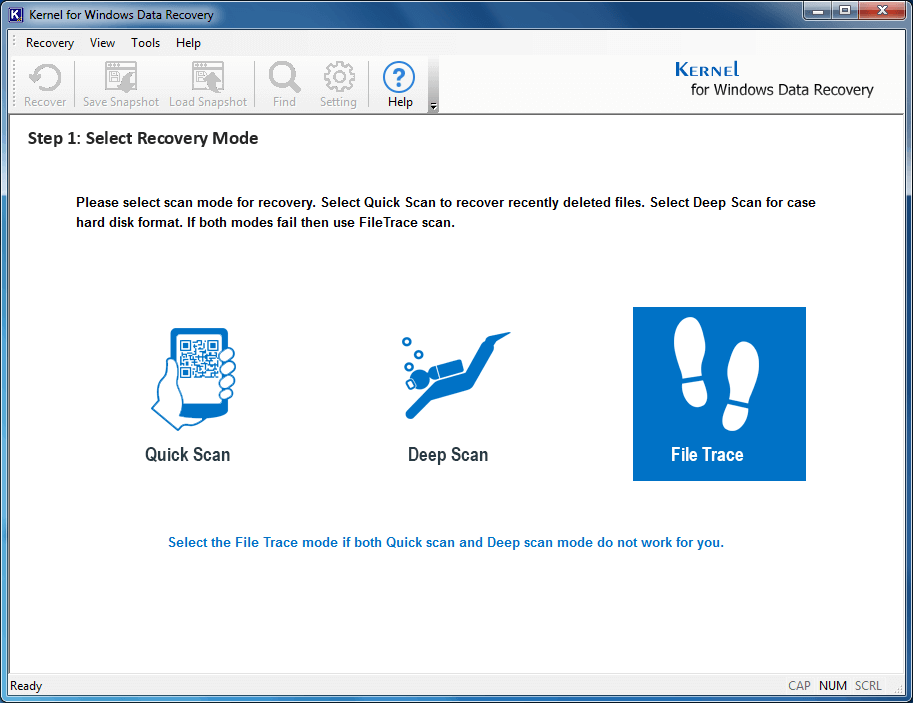
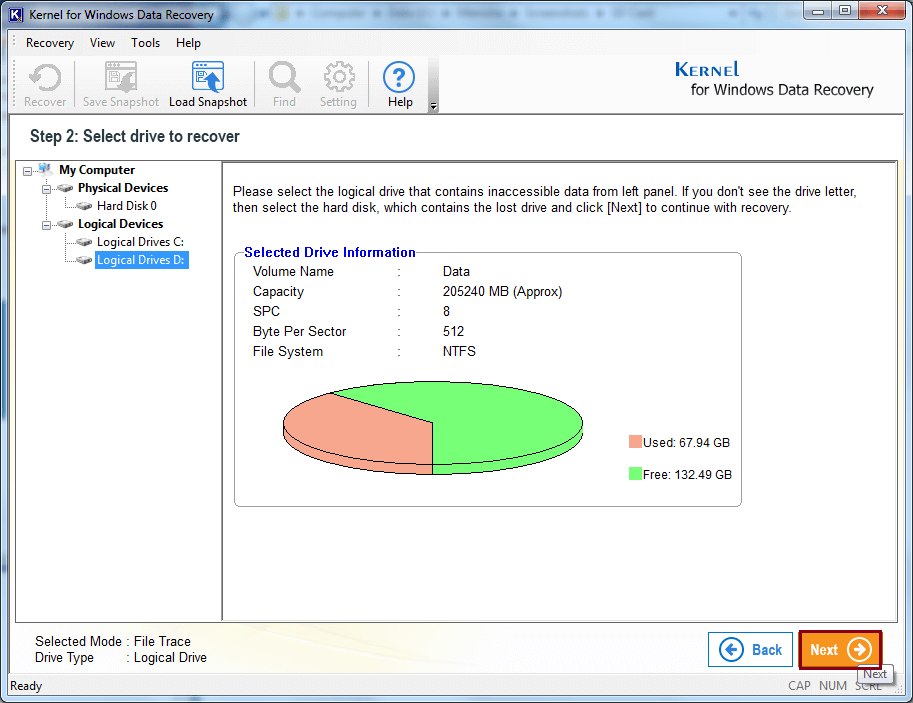
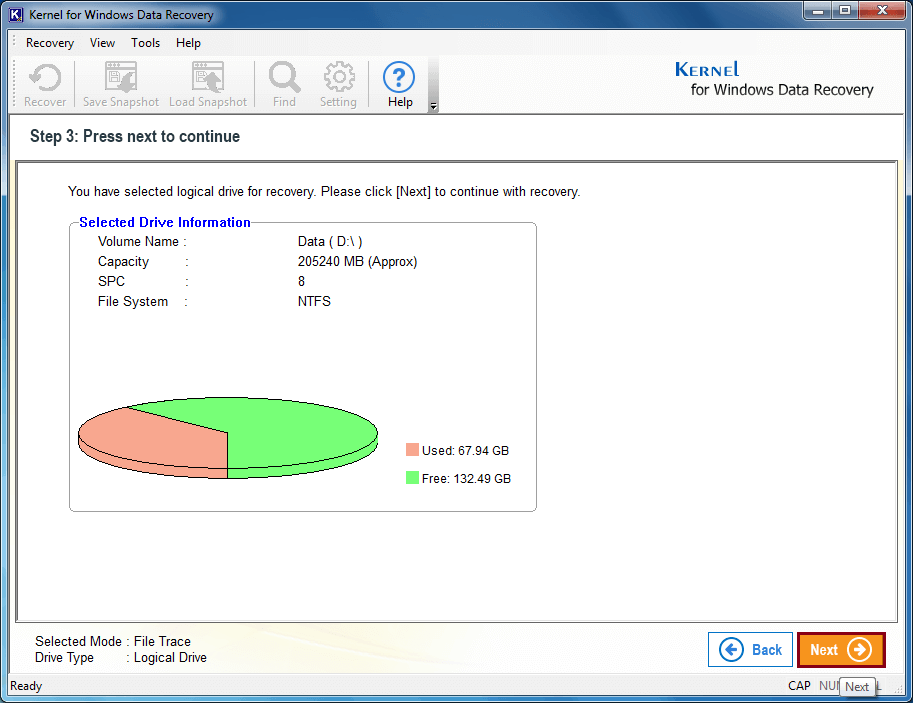
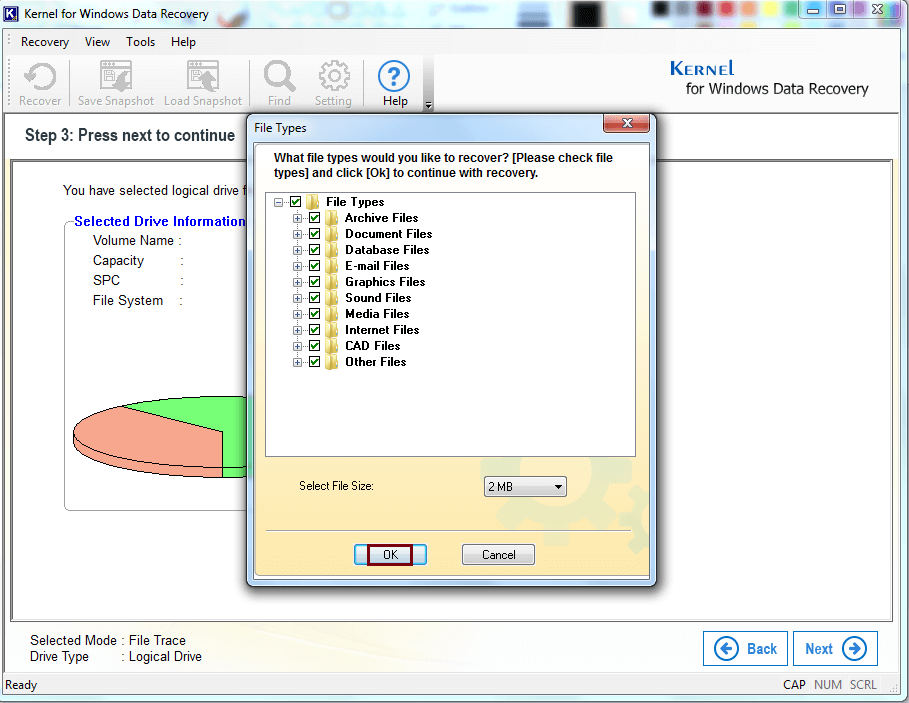
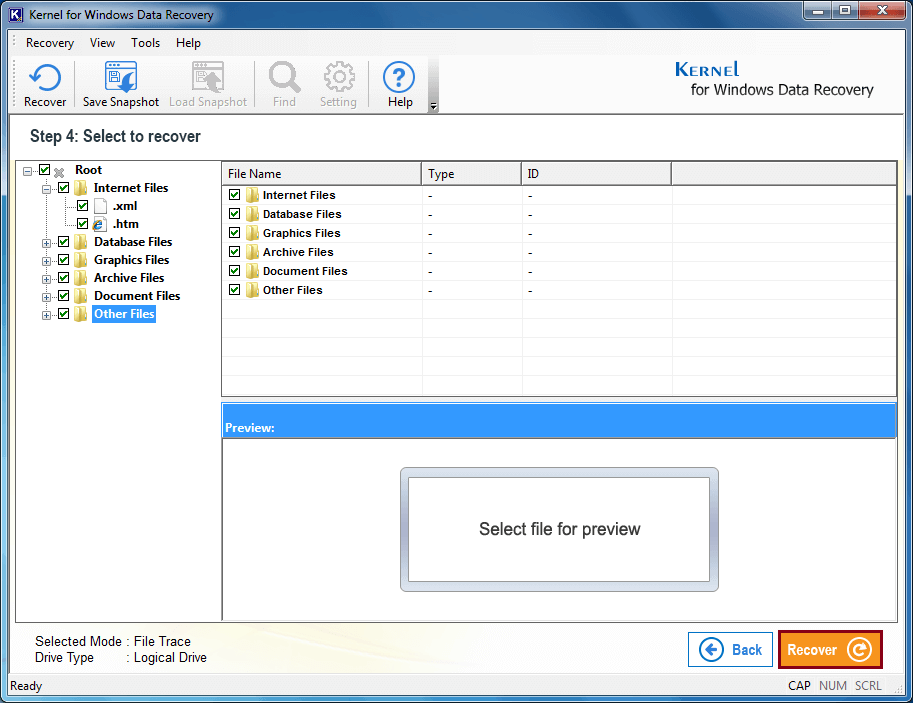
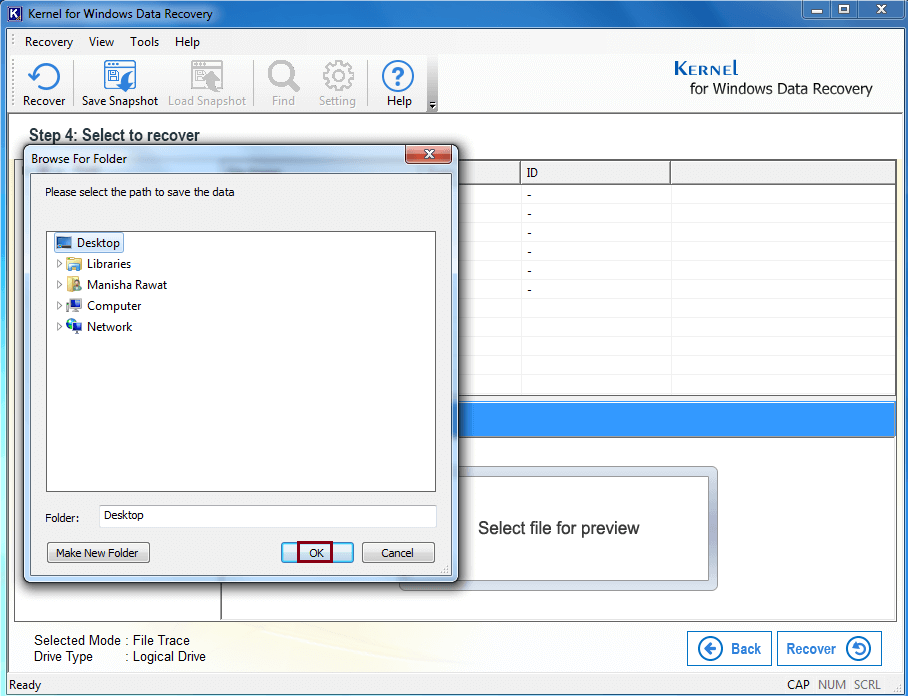
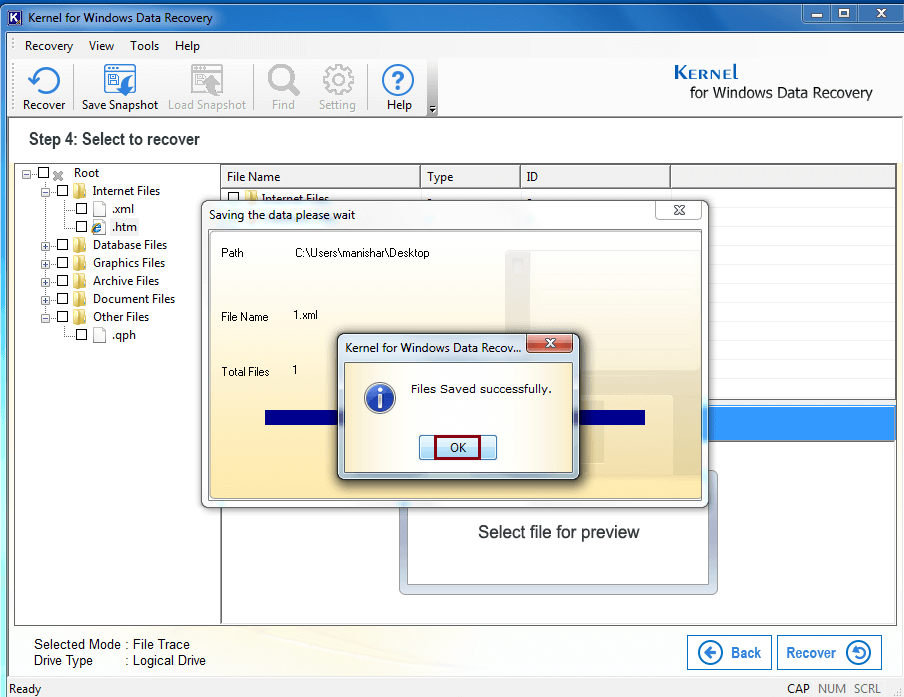
Conclusion:
Operating System Not Found is not an error happens that frequently, but when it happens it poses a great threat to your data and information stored in your system. There are several methods mentioned in this blog with the help of which you can fix this problem, but all those methods mentioned above are quite risky to use if you are new. It is recommended to take help of a professional while performing those methods. But you can anytime use Windows Data Recovery if there is any problem with the hard disk. The tool is totally safe to handle Windows corruption and recover data, with zero data integrity loss.

